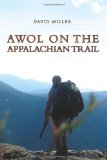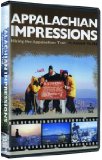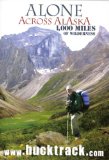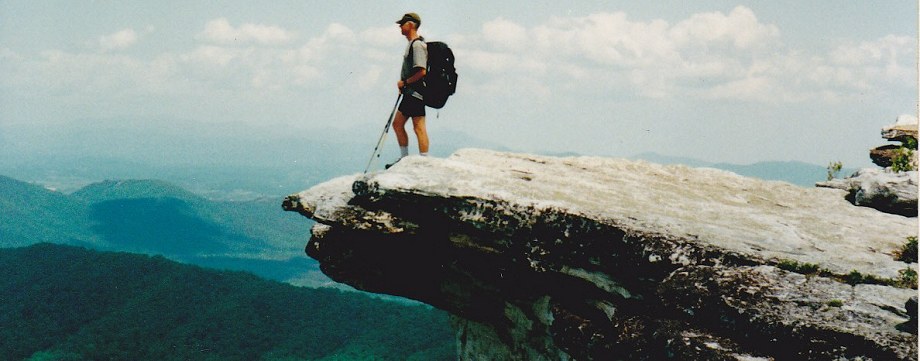If you like this page, please click the “Like” button!
My Gear List and Advice
I have done several long distance hikes, including the Appalachian Trail, a solo Traverse of Alaska, the Pacific Crest Trail, the Continental Divide Trail and the The Desert Trail. Following is what I might carry were I to thru-hike the Appalachian Trail again and was just buying gear. Most of this gear is “top-of-the-line.” If you are on a budget, you can sacrifice a little quality to save money.
It’s important to recognize there is no “perfect gear.” Gear selection involves compromise. It’s largely a balance between comfort while walking (a light and comfortable pack) and comfort while in camp (warm bag, good shelter, enough warm clothing and food, etc.) and expense. There are luxuries that would be nice to have but whose weight is not justified in climbing thousands of feet and walking many miles every day. Also, gear beloved by one person may be disliked by another. Combine your own experience with the advice of veteran backpackers to make your decisions. Don’t over-think your gear. Success is mostly mental.
You’ll want to be warm enough, and dry enough, and comfortable enough, and part of being comfortable is having a reasonably light pack. A reasonably light pack will make your hiking more fun and it will be easier on your body, specifically knees and ankles. I would recommend keeping your base pack weight (your pack and everything in it except food, water and fuel) under 20 lbs. 15 lbs or less is an even better target. The “Big 3” is a good place to start with weight reduction: shelter, pack, sleeping bag. Nowadays my “Big 3” weigh less than 5 lbs.
If you get cold easily or are starting in late winter, you might want to add a down jacket to the list or otherwise modify it to make sure you stay warm enough.
Now, my packing list. These are examples of what I consider to be good choices.
Pack: A very popular A.T. pack is the Osprey Exos. If you choose the best size and fit for you it might be a hard pack to beat. For ULA pack fans, the Circuit or CATALYST
will be a better choice for most. It’s a very popular pack for thru-hikers.
Shelter: Six Moon Designs Lunar Solo (23 oz.) I used one on part of the CDT and in Washington on the PCT and on many other trips. It sheds rain well, and has a built in floor and bug netting. Also outstanding are Tarptents. Both these manufacturers make very good shelters. You might also research backpacking hammocks. There are constructed shelters on the trail, but there will be times when they will be full or noisy or you will end up between them. Carry your own shelter.
Sleeping Bag: Enlightened Equipment Revelation Can be cinched up like a bag or opened up like a quilt. Warm for the weight. Personally, I’d go with the 20 degree version with DownTek. 20 oz. I line the stuff sack of my sleeping bag with a Mylar turkey roasting bag. I also line my pack with a trash compacter bag.
Sleeping Pad: Thermarest Prolite Plus , Small (15 oz.) A good night’s sleep without tossing and turning is vital. This mattress is self-inflating and 1.5 inches thick. Younger hikers might need less padding and prefer a closed-cell foam pad. If so, it’s really hard to beat the RidgeRest SOLite
at .625 inches thick. A small weighs 9 oz and is 48″ long. A regular is 14 oz. and is 72″ long. 48″ is long enough for most people when they put their pack or other items underneath their feet. Some might want to buy a regular length and cut a piece off one end to use for a “sit pad” for breaks along the trail, and at night to prop up their feet.
Shoes: ASICS Men’s GEL-Kayano (~28 oz.) Few folks need heavy, stiff, leather hiking boots on the AT. I use lightweight running or trail shoes. I’d switch to stiffer soled shoes for rocky Pennsylvania. I would NOT buy several pairs ahead of time because your feet will likely get bigger as you hike. It’s best to try on many models of shoe for yourself to see what feels best for YOU. Doesn’t matter much what shoes other people like.
Hiking Poles: Black Diamond Alpine Carbon Cork. Great all-around choice. Cascade Mountain Tech Carbon Quick Lock.
Excellent value. Yana Poles. My favorite ultralite pole. (Not a good choice if you break poles easily. 3.5 oz. each) You probably will like hiking poles. They will make your hike safer and easier. Poles help prevent falls and make descents easier on your knees. I use one of my poles every night to hold up my tarp.
Rain Jacket: Helium II Jacket (6.4 oz.) Rain gear is multi-use: rain protection, wind protection, warmth, to wear while doing laundry. Budget Choice: Red Ledge Free Rein Parka
(12.5 oz)
Rain Pants: Montbell Versalite, 3.6 oz. Use for rain, warmth, wind protection, and wear when you’re doing your laundry. Budget Choice: O2 Rain Pants (3 oz)
Jacket: Patagonia R2 13.1 oz. A truly great jacket. Light, warm. Your insulation layer should zip all the way down so you can cool off easily. On drier trails I prefer a down jacket for greater warmth per oz. A Montbell Alpine Light Down Jacket
would be a good choice on the AT if you get cold easily or start early in the season. Just keep it dry.
Convertible Pants: Mountain Hardwear Mesa . (14.9 oz.) Convertible pants were a good choice for the AT.
Long Underwear Top: Smartwool Midweight Zip T (7 oz) I like a long underwear top that zips down for venting. I’d send long underwear home once I was sure it was summer, then get it back somewhere in New England if it was getting chilly again. This shirt isn’t itchy and smells better than synthetics. But more inexpensive synthetics
will do nicely, too.
Long Underwear Bottoms: Patagonia Midweight Bottoms. (6.8 oz) Send these home once I was sure it was summer. Other, cheaper brands
will work almost as well.
Balaclava: Outdoor Research Option. A balaclava might be the most warmth for the weight of any clothing item you can carry. Wear it when it’s cold at night.
Mitten Shells: eVENT Rain Mitts. (1.4 oz) Great when it’s cold and wet. Send home in the summer. Some people may decide not to take them. I like them for those cold rains when I’m using my hiking poles. Also getting good reviews, and with a few more features, are Outdoor Research Revel Shell Mitts
Gloves: Wear extra socks on your hands
Shirt, Short Sleeve Synthetic: Your Choice
Underwear bottoms: Under Armour Boxerjock or similar (4.8 oz.) 2 pair. These can really help prevent chafing. I use the 6″ legs.
Socks: 3 pair. Darn Tough socks are my favorites, specifically the Darn Tough 1/4 Sock Cushion (2.4 oz.) I usually don’t use liner socks
, but studies have shown that they help reduce blisters. I’ve started wearing Fox River X-Static Liner Crew socks for the “anti-stink” factor as well.
Socks, Sleeping: Save one pair of loose-fitting, warm socks to wear only for sleeping They will be warmer and they will keep your bag cleaner. I use Possum fur socks. Do a search on ebay for the best value. Acorn fleece socks are also warm and popular and likely much cheaper.
Cap: Keep the sun off your head and out of your eyes, etc with some kind of hat.
Cotton T-Shirt and Nylon Shorts: Two optional items you might want to start out with then mail home if you feel they aren’t worth it. A cotton t-shirt is nice for a towel, cleaning glasses, or to wear in town. The shorts might be worth it when it’s hot, to have something clean(er) to where when you hitch, etc.
Bandana: Cotton. Washcloth, sweat band, towel etc.
Smart Phone: Smartphones are optional, and a new addition to my gear. I carried one on the Desert Trail and used it to update my journal, as a phone, a clock, to check email, as a GPS, for listening to music, as a star chart, as a camera. An awesome tool. I think it makes sense to carry an external battery. I’m carrying a RAVPower 6700mAh. 6.0 ounces on my scale with storage bag and cable. 2 amp input for faster charging of battery, 2.4A output for faster charging of my phone. Solar chargers don’t work well on the A.T.
Flashlight: Photon II Microlight. (2 of them) .4 oz. I have a dot of velcro on it, and a dot of velcro on the bill of my ballcap so I can use it as a headlamp, hands-free. Usually when it is dark, I am sleeping!
Cord: Parachute aka “550” 25 ft. Hanging up laundry, guying your tent, shoelaces, bear-bagging (something I didn’t do most nights on the A.T.) etc. You can “gut” the cord and use the inner cords too, for emercency thread, dental floss, etc.
Knife: Victorinox Swiss Army Classic. A tiny one with scissors, knife, and tweezers.
Pen: Ballpoint pen (felt-tips bleed, pencil fades) I kept notes on the margins of my guidebook.
Guidebook: A.T. Guide Make sure you get the latest edition.
Maps: I wouldn’t carry any on the AT. I’d use the GPS on my phone with a compass as a backup. Other places, like the CDT or PCT I carry paper maps as well.
DEET: Repel 100 1 oz.
Carry when you start hitting skeets and/or ticks. I like the spray for even treatment.
Camera: Panasonic Lumix ZS20 . I like the 20X zoom and the GPS to log image location. Back up photos often and take people photos and video! Bring a spare battery, charger, and card. You know what, I’d probably just use my smart phone nowadays.
Duct tape: 10 feet of duct tape wrapped around your water bottle or other smooth surface. Can help prevent hot spots on your feet if you clean and dry them first. Good for many types of repairs.
Needle: Repairing your stuff
Ziplock Bags: Keep your stuff dry and organized
Compass: I have tiny button compass on a wristwatch band or somewhere that it’s always with me.
Credit/ATM Cards
Driver’s License: For ID
Address/Email/Phone # list: Printed out on one sheet of paper and/or on your smartphone.
Toothbrush/Paste: A tiny tube of paste.
Razor: I brought one disposable, and shaved without shaving cream after showering. Most guys will want to grow a cool thru-hiker beard.
Ear Plugs: Loud snorers are common in shelters!
Floss: Works good for thread, too.
Lip Balm: With sun block. Your lips WILL get chapped.
Sunscreen: Small tube, high block factor sunblock. You’ll be hiking in the shade a lot but you will get a lot of sun at times, including at the start of the trail before leaves are out.
Blister Fixer: Leukotape P tape works well. PREVENT BLISTERS!! Use comfortable shoes, and stop to dry your feet and adjust your socks as needed BEFORE you get a blister. http://fellrnr.com/wiki/Taping
Ibuprofen: To help with the inevitable pain and inflammation in your knees, etc.
Antibiotic Cream
Cold Medicine
Other Medications
Prescription drugs: If you take any
Toilet Paper
Stove: Alcohol stoves work well on the A.T. I use the Caldera Keg System, but just about any alcohol stove will work. A windscreen is very important for alcohol stoves. If you are starting in wintery conditions, or alcohol stoves aren’t your thing, lots of people like canister stoves. The Optimus Crux Lite with Tera Solo cook Set
Is compact and gets great reviews. Check out the Jetboil
and Pocket Rocket
as well.
Fuel: I carried alcohol fuel in a MARKED empty plastic drink bottle of a different shape from my water bottle. Plus I tie a cord beneath the cap so it feels different when I grab it. I also set it beyond my reach when I’m sleeping. I used several types of alcohol fuels such as HEET (a gas-line de-icer, burns hottest, get the yellow bottle), rubbing alcohol (burns the coolest, I’d get the highest “%” I could find), and denatured alcohol. You should have no trouble finding canister fuel along the trail. Just keep track of home much is left and where your next source of fuel might be. Partial canisters are often found in “Hiker Boxes.”
Pot Gripper Possibly unnecessary depending on your cooking system.
Cooking Pot: MSR Titan Kettle is popular. 1 liter or a little less is a good size. A great value is the Stanco Grease Pot. It’s aluminum, light and cheap According to my research, aluminum is safe. My caldera keg comes with a pot.
Lighter: Small, 2 of them. One in your pocket, one in your cook kit.
Food: Some of my common foods were peanut butter, granola bars, Poptarts, cold cereal, Snickers, those Knorr’s pasta/rice meals (around 5.5 oz.), Idahoan Potatoes, Ramen, nuts, crackers, peanut M&Ms, cheese etc. Just about anything without water in it!
Water Treatment: AquaMira is my choice. The Sawyer Filter
is a very popular filter. I treat all surface water. Giardia is NOT a myth. I’ve had it more than once.
Water Bag: A light one of your choice, 2-3 liters. The Nalgene Cantene is popular. I use these mainly for toting water to my evening camp or carrying a little extra water on dry stretches of trail.
Water Bottles: I usually carry two 1-quart Gatorade bottles. I watch the guidebook to keep track of upcoming water sources and rarely carry more than one full quart between sources on the A.T.
Trash Compactor Bag: For keeping clothing and gear dry inside my pack. I used no pack cover with my pack, and had no trouble keeping my stuff dry.
My total pack weight when I started out was 20 lbs., including 1 quart of water and about 3 days worth of food. My pack weight probably averaged around 23 lbs., because I began carrying more food later on. I figure 2 lbs of food per day.
Gear and clothing choices are highly subjective. No matter what you decide to bring, you’ll be making some changes along the way. Try out all your stuff BEFORE you hit the trail!
Remember, there is no “best gear” for everyone. The best gear for you will be what works best for you style of hiking. Do your research and make up a list then ask experienced hikers to look it over. No matter what you choose they will suggest changes!
If you like this page, please click the “Like” button at the top!
 The Best A.T. Guidebook A.T. Guide |
 The Best A.T. Book AWOL on the Appalachian Trail |
 The Best A.T.DVD Appalachian Impressions DVD |
 My Adventure Alone Across Alaska DVD |





Thank you for gear list. I have based my gear set up on this for my planned ’15 thru hike, with a few minor changes. I was wondering when you started, as I am planning mid February. how would you adjust for colder weather other than a down jacket? Specifically shoes and use of gators. Also what advantages do you see from the alcohol stove over canisters?
I started later so I wouldn’t have to deal with weather that cold, but if I did start in mid-February I would definitely add a down jacket and second set of long underwear, a heavy weight set for sleeping. I’d probably still wear running shoes but would use gators for snow. In February most people would probably want to start with some kind of light hiking boot for the greater warmth. I have hiked hundreds of miles in snow in running shoes in more moderate conditions, though. I normally don’t use gators or carry camp shoes, but I’d probably carry a lightweight pair of camp shoes as well.
Another item I’d add is Kahtoola microspikes.
Alcohol stove systems tend to be lighter than a canister stove system, and it’s easier to carry only as much fuel as needed and fuel is probably easier to find. A good windscreen is vital. Canister stoves also work well, of course and there is little doubt they are faster and hotter.
Took your advice for a georgia section hike. Spot ON! Thanks for the advice
Thanks for that! Must have been a fun hike.